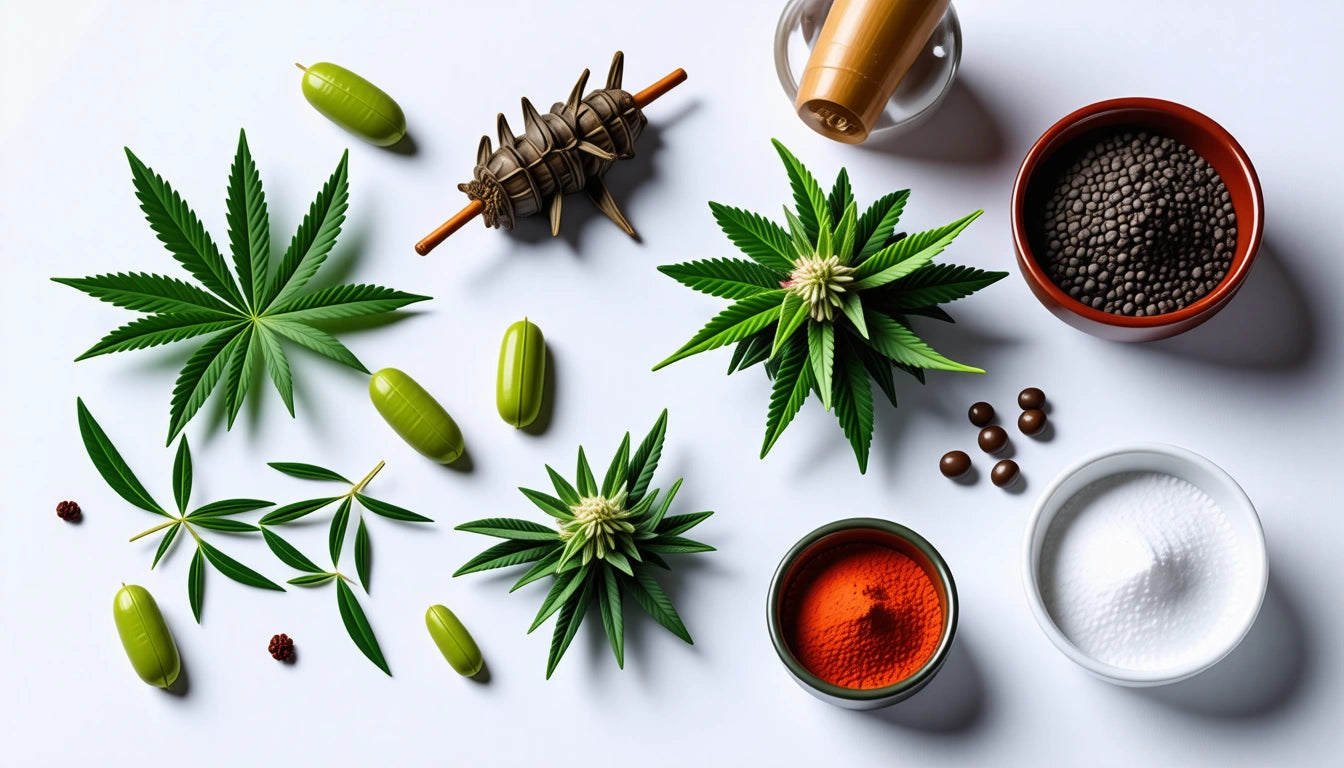Table of Contents
Understanding THC: The Key Component in Cannabis
When discussing cannabis, the term THC frequently comes up as the primary compound responsible for the plant's psychoactive effects. But what is THC in weed exactly, and why does it matter? This comprehensive guide explores the science behind THC, its various forms, and how it interacts with the human body.
What is THC: The Fundamental Cannabinoid
THC (tetrahydrocannabinol) is the principal psychoactive constituent of cannabis. When people ask what THC is in weed, they're referring to this compound that produces the characteristic "high" associated with cannabis consumption. THC works by binding to cannabinoid receptors in the brain, affecting areas responsible for pleasure, memory, thinking, concentration, and sensory and time perception.
In its natural state in the living cannabis plant, THC exists primarily as THC-A (tetrahydrocannabinolic acid), which is non-psychoactive. Only when heated through a process called decarboxylation does THC-A convert to THC, activating its psychoactive properties. This transformation occurs when cannabis is smoked, vaporized, or cooked.
THC vs. THC-A: Important Distinctions
Many consumers wonder what is THC-A weed compared to regular THC. THC-A is the acidic precursor to THC found in raw, unheated cannabis. While THC-A doesn't produce intoxicating effects, it may offer therapeutic benefits of its own. According to research on THC and THC-A differences, the conversion from THC-A to THC happens when cannabis reaches temperatures around 220 °F (104 °C).
This distinction is important for medical cannabis patients and those seeking specific effects. Raw cannabis products high in THC-A may provide anti-inflammatory and neuroprotective benefits without the psychoactive experience. When properly stored in airtight containers with secure caps, THC-A remains stable and doesn't convert to THC until intentionally heated.
Types of THC Found in Cannabis
When consumers ask what kind of THC is in weed, they're often surprised to learn there are multiple forms. Beyond the familiar Delta-9-THC (the primary psychoactive compound), cannabis contains:
- Delta-8-THC: A less potent isomer with milder psychoactive effects
- Delta-10-THC: Another isomer with distinct effects
- THC-B: A homolog with potentially stronger binding affinity to receptors
- THC-V: A variant that may actually suppress appetite, contrary to THC's hunger-inducing effects
Understanding these THC types helps consumers make informed choices about the products they use and the effects they might experience.
THC Content in Different Cannabis Products
The question of what type of THC is in normal weed varies by strain and product type. Modern cannabis flower typically contains between 15-25% THC, though some specialty strains can reach 30% or higher. High-THC cannabis strains are often sought after for their potent effects.
Different parts of the cannabis plant contain varying amounts of THC:
- Flower buds: Highest concentration
- Leaves: Lower amounts
- Stems: Minimal THC content
- Roots: Virtually no THC
Concentrates like wax, shatter, and oils can contain 60-90% THC, providing much more potent effects. Understanding THC content measurements is crucial for proper dosing and avoiding unwanted effects.
Effects of THC on the Body and Mind
The effects of THC vary widely based on dosage, individual tolerance, consumption method, and the specific strain's cannabinoid and terpene profile. Common effects include:
- Euphoria and mood elevation
- Relaxation and stress reduction
- Altered sensory perception
- Increased appetite
- Pain relief
- Potential anxiety or paranoia (especially at higher doses)
THC interacts with the body's endocannabinoid system, primarily binding to CB1 receptors in the brain and central nervous system. This interaction explains why THC affects cognition, mood, and physical sensations. Learning about THC's mechanisms helps consumers anticipate and manage their experiences.
The Future of THC Research and Applications
As cannabis legalization expands globally, research into THC and its various forms continues to evolve. Scientists are exploring targeted formulations that maximize therapeutic benefits while minimizing unwanted psychoactive effects. The future may bring:
- More precise cannabinoid ratios for specific medical conditions
- Better understanding of how different THC types interact with other cannabis compounds
- Advanced delivery systems for more controlled dosing
- Expanded medical applications based on ongoing clinical research
For consumers wondering what THC is in weed they purchase today versus tomorrow, the landscape is rapidly changing. Product labeling is becoming more detailed, offering information not just on THC percentage but on terpene profiles and minor cannabinoids as well.
Understanding THC in all its forms empowers consumers to make educated choices about cannabis products. Whether seeking therapeutic benefits or recreational experiences, knowing what kind of THC is in weed products allows for more predictable and satisfying outcomes.











Leave a comment
All comments are moderated before being published.
This site is protected by hCaptcha and the hCaptcha Privacy Policy and Terms of Service apply.